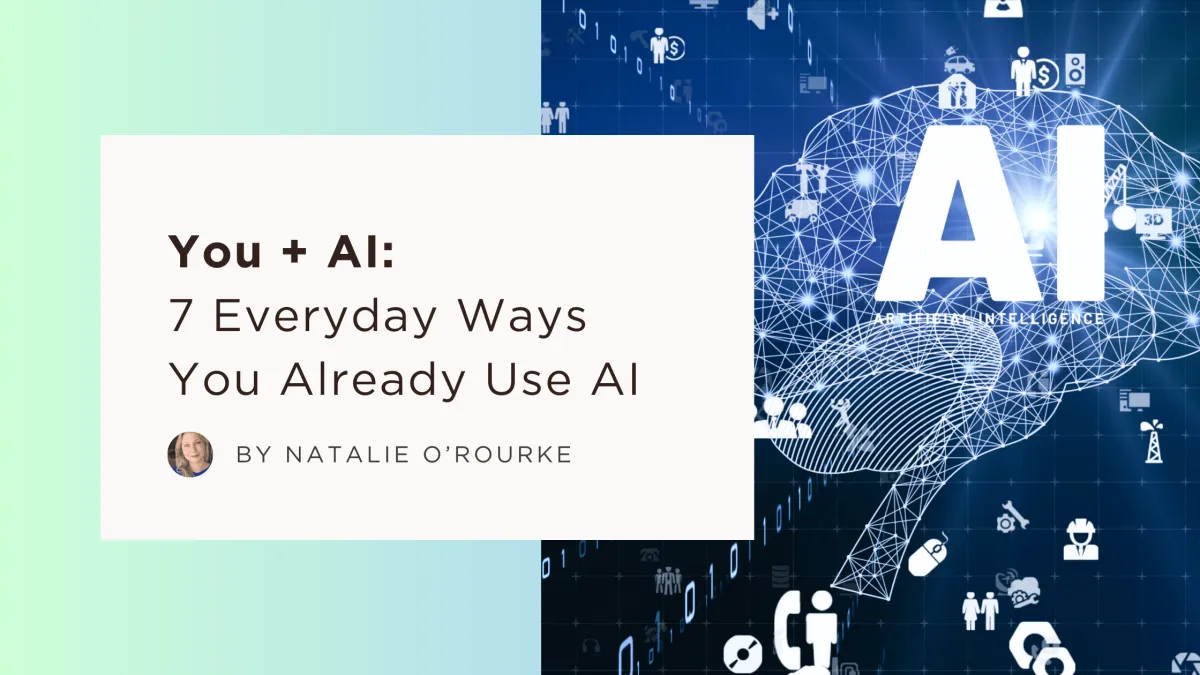UX AI Blog

You + AI: 7 Everyday Ways You Already Use AI
We often think of artificial intelligence (AI) as a tool of the future — something reserved for tech companies, BUT it’s already quietly operating in the background of our everyday lives, streamlining tasks and guiding decisions without us even realizing it.
AI is not only for the tech-savvy. You don’t have to “learn AI” — you just need to recognize how and where you're already using it. That awareness alone can open the door to new opportunities, both personally and professionally.
Let’s take a look!
What is AI?
AI - Artificial intelligence is the technology designed to imitate some aspects of human intelligence, like learning, problem-solving, predicting, or recognizing patterns. But don’t get caught up in the jargon and the “big” words.
The simplest form of AI to explain as an example: When you shop online and see 'Customers who bought this also bought...' suggestions, that's a basic form of AI.
AI today is about simple systems that help you:
Get better search results in Google
Avoid spam in emails
Personalize your experience while you’re doing online shopping
Detect fraud in your online banking activities
Its goal is to make life easier and more efficient for us humans, one small, smart interaction at a time. But stay tuned, as they say, this is only the beginning. AI will become very advanced as time goes by.
7 Everyday Ways You’re Already Using AI
1. Typing Assistance
That moment your phone autocorrects a typo or your email finishes your sentence before you do? That’s AI using natural language processing is trying to help you type faster and more accurately.
2. Smart Recommendations
Whether it’s Netflix, Spotify, or Amazon, AI is constantly analyzing your habits and preferences to offer your next favorite show, song, or product. These systems learn from what you interact with to improve what they show you next.
3. Traffic & Navigation Tools
Google Maps and Waze don’t just give directions — they use real-time data and predictive AI to reroute you around accidents or traffic delays, often saving you minutes (or hours) on the road.
4. Social Media Feeds
Ever notice how your social feeds feel oddly personalized? That’s no accident. AI is running what you see, based on your interests, clicks, watch time, and interactions — even if you’ve never adjusted your settings.
5. Banking & Fraud Detection
When your bank notifies you of a “suspicious charge,” that alert often comes from an AI system trained to recognize unusual patterns in your spending, flagging possible fraud faster than any human could.
6. Voice Assistants
Whether you’re asking Siri for the weather or telling Alexa to play your favorite playlist, you’re using voice-enabled AI. These tools convert speech to text, interpret your intent, and take action — all in seconds.
7. Customer Support Chatbots
That “How can I help you today?” pop-up on a website is likely powered by AI. These bots use decision trees and machine learning to answer questions and solve problems without human involvement (most of the time).
Why All This Matters
If you’re already surrounded by AI, why should you care?
Because the next step isn’t just using AI — it’s learning how to use it well. As AI tools become more powerful and accessible, your ability to recognize, and strategically use them becomes a superpower in both your work and personal life.
A Mindset Shift: From Passive User to Smart Collaborator
You're already a AI user — and you can become a smart collaborator.
3 simple questions to ask your daily:
Where do I spend the most time in my day?
Are there AI tools that could help me simplify or streamline those moments?
What’s one new AI tool I could try this week, just to explore?
Small steps can lead to big shifts.
“A journey of a thousand miles begins with a single step.” - Lao Tzu
Conclusion
AI isn’t reserved just for tech-savvy people. It’s already embedded into our lives, our devices, and daily choices. Becoming aware of that is the first step to using it with intention.
You don’t need to learn everything about AI. You just need to stay open and curious with the tools you already have access to. This can be the first step to a more productive life and a supercharged skill set.


